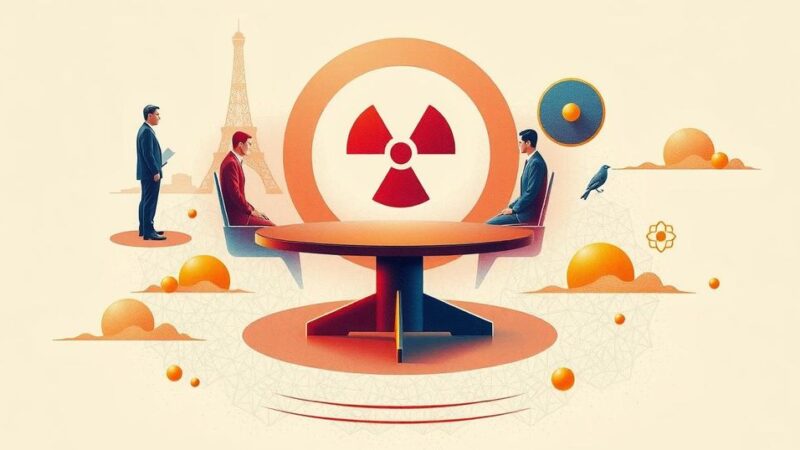On October 5, a 4.6 magnitude earthquake struck near Semnan, Iran, leading to conspiracy theories about a nuclear test due to the area’s proximity to nuclear facilities. Simultaneously, tensions escalated as Hezbollah launched rockets into Israel amid ongoing military confrontations, raising fears of broader conflict in the Middle East.
On the evening of October 5, a 4.6 magnitude earthquake struck near Semnan, Iran, prompting a surge of conspiracy theories regarding a potential nuclear test. According to the European-Mediterranean Seismological Centre (EMSC), the quake was felt in Tehran, approximately 110 kilometers away, at around 10:45 PM local time. A subsequent lower intensity tremor was reported in Israel, further igniting discussions on social media about the nature of the seismic events. Given Semnan’s proximity to Iran’s nuclear facilities, speculation arose that the earthquake may have been a result of a clandestine nuclear detonation. Many social media users, reflecting on the situation, suggested that the earthquake could be linked to nuclear activities, with claims that a test bomb was detonated underground to minimize radiation exposure. Despite these theories, experts clarified that the earthquake’s magnitude and shallow depth do not align with characteristics typical of a nuclear test, which is notably difficult to conduct without causing significant surface damage. This incident occurred amid heightened tensions in the region, particularly as Hezbollah launched a fresh barrage of rockets into Israel, exacerbating existing fears of escalating conflict. Israel’s military authorities reported the deployment of additional ground troops and acknowledged that Hezbollah had targeted various locations, including Haifa, with around 180 rockets. Amid these developments, Hezbollah’s acting leader asserted that the group’s military capabilities remain intact despite the ongoing Israeli airstrikes. In a video statement from an undisclosed location, Sheikh Naim Kassem spoke of Hezbollah’s resilience and mentioned the impending appointment of a new leader to succeed Hassan Nasrallah, who had recently died in an Israeli airstrike. In contrast, Israeli Prime Minister Benjamin Netanyahu labeled Hezbollah as markedly weaker than in previous years, citing the elimination of a significant number of its operatives, including Nasrallah and other high-ranking commanders. Meanwhile, concerns linger regarding the fate of Hashem Safieddine, the rumored successor to Nasrallah, as ambiguity surrounds his status following recent military actions.
The geopolitical landscape in the Middle East is fraught with tension, particularly between Israel and Iran, fueled by accusations of nuclear proliferation and military aggressiveness. Iran’s nuclear program, particularly its developments near Semnan, has been a focal point for international scrutiny and concern, leading to fears of escalation in military confrontations. Concurrently, Hezbollah’s confrontational stance towards Israel has intensified, with recent escalations resulting in rockets fired from Lebanon, prompting military responses from Israeli forces. The ongoing situation highlights the precarious balance of power in the region, overshadowed by the potential implications of nuclear capabilities.
In summary, the earthquake near Semnan, Iran, has ignited wild theories about a nuclear test amidst a volatile backdrop of escalating hostilities involving Hezbollah and Israel. Although the incident has drawn speculation, experts largely dismiss the notion of a nuclear detonation based on scientific evidence. With regional tensions mounting, the situation warrants close observation as both diplomatic and military developments unfold.
Original Source: www.mirror.co.uk






